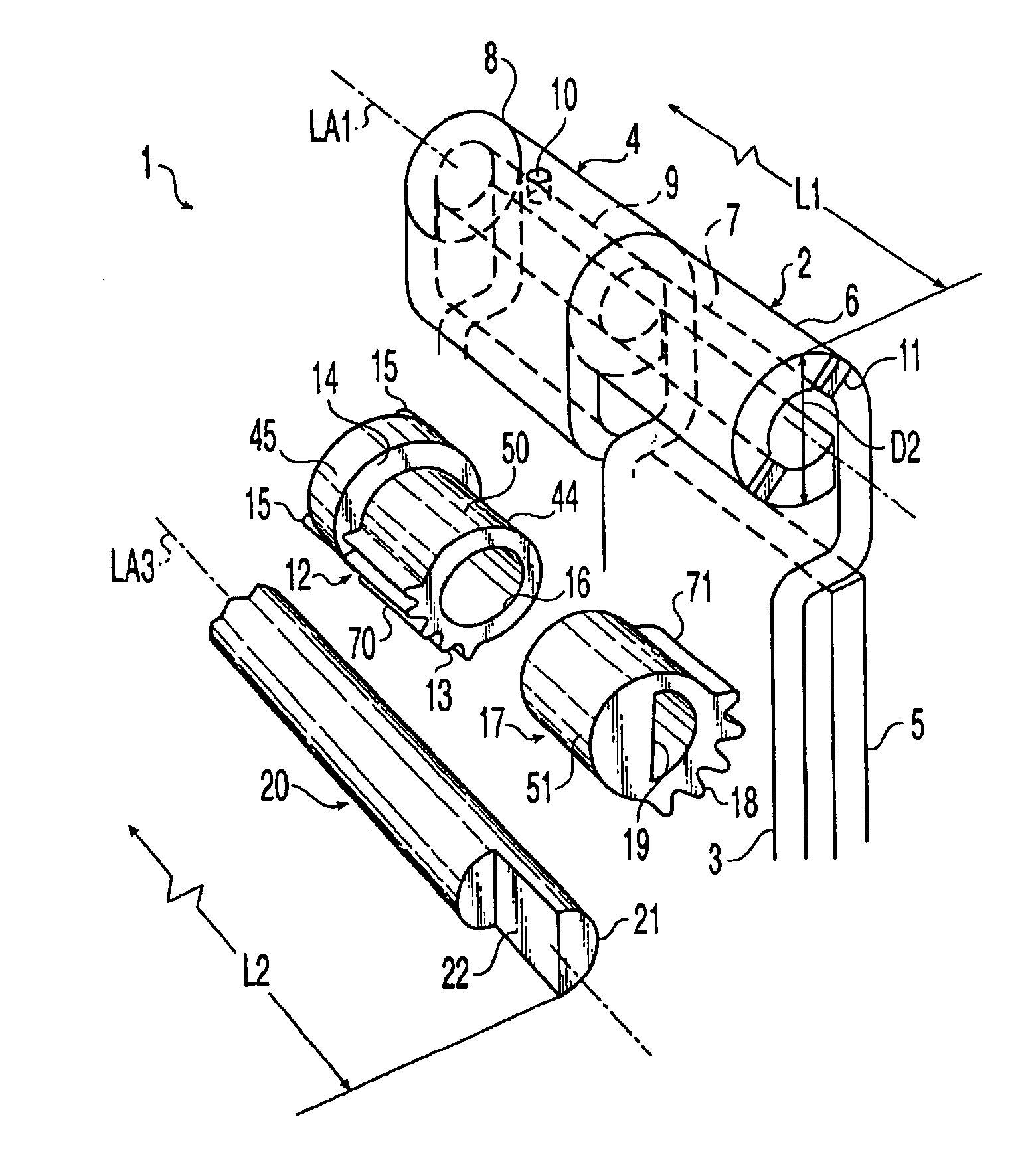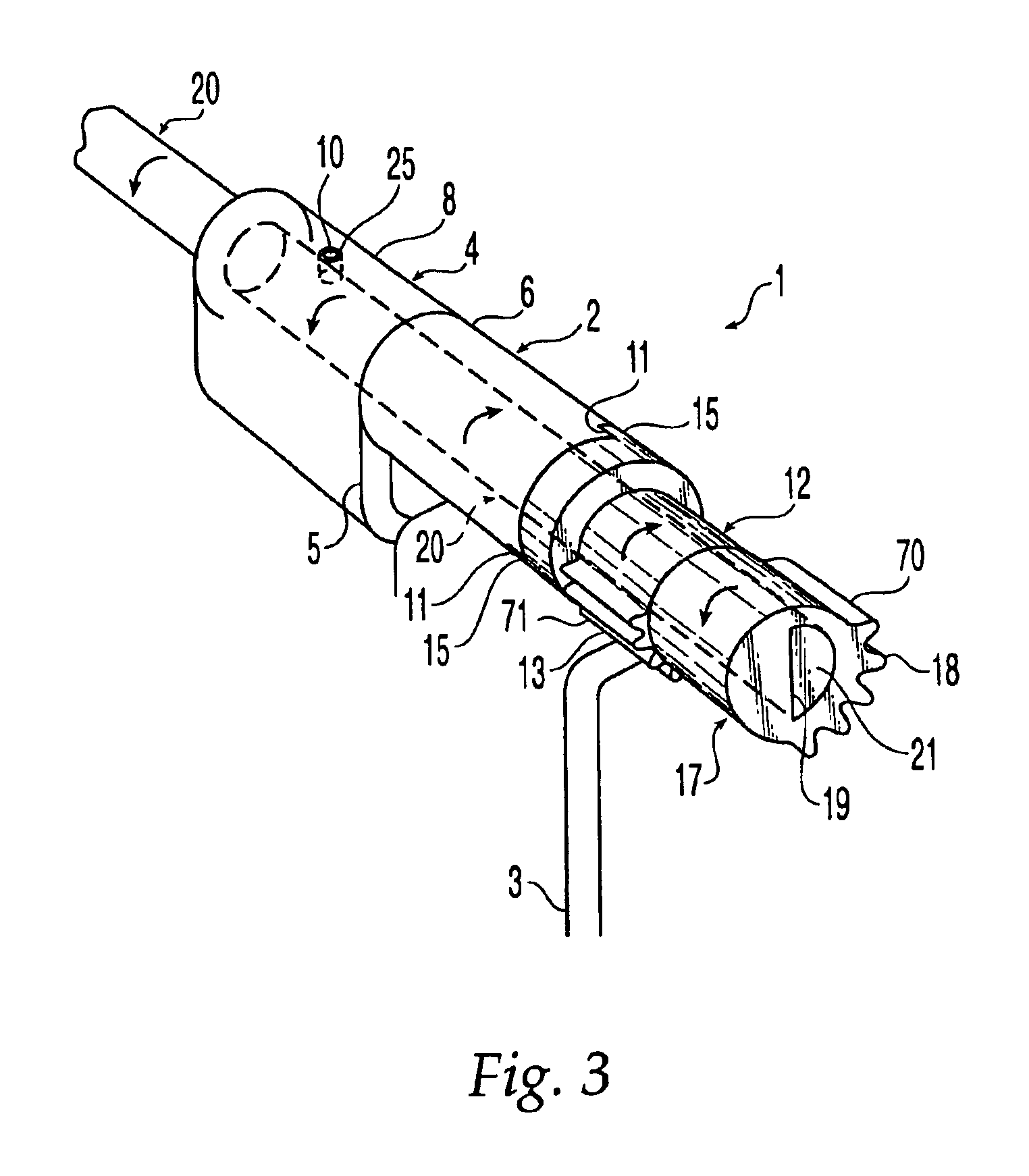Covered pinned hinge
a hinge and pinned technology, applied in the field of butt hinges, can solve the problems of reducing the size of the bearing, the cost of hinge performance, and the general appearance improvement, and achieve the effects of reducing the cost of hinge hardware, reducing the delivery time of this product, and great flexibility and buying efficiency
- Summary
- Abstract
- Description
- Claims
- Application Information
AI Technical Summary
Benefits of technology
Problems solved by technology
Method used
Image
Examples
Embodiment Construction
Referring to FIG. 1, a pinned hinge 1 having a mechanically articulated cover is depicted in one embodiment as including at least two hinge members 2, 4. The hinge members 2, 4 each comprise knuckles or barrels 6, 8 and leaves 3, 5 connected thereto, respectively. In one preferred embodiment (shown in FIGS. 6-8), a five knuckle hinge 1 is provided in which hinge member 2 has three knuckles 6 and hinge member 4 has two knuckles 4, which are interspersed between the knuckles 6 of hinge member 2. A total hinge length L1 (as shown in FIGS. 1 and 6) is defined as the total length through the knuckle portions of the hinge members 2, 4 after the hinge has been assembled, including the contributions to the total length by any bearings or other structures that may be located in the joints between adjacent knuckles.
The knuckles 6, 8 have passageways 7, 9 which extend longitudinally through the knuckles and define a longitudinal axis LA1 through the knuckles 6, 8 and pinned hinge 1. The passag...
PUM
 Login to View More
Login to View More Abstract
Description
Claims
Application Information
 Login to View More
Login to View More - R&D
- Intellectual Property
- Life Sciences
- Materials
- Tech Scout
- Unparalleled Data Quality
- Higher Quality Content
- 60% Fewer Hallucinations
Browse by: Latest US Patents, China's latest patents, Technical Efficacy Thesaurus, Application Domain, Technology Topic, Popular Technical Reports.
© 2025 PatSnap. All rights reserved.Legal|Privacy policy|Modern Slavery Act Transparency Statement|Sitemap|About US| Contact US: help@patsnap.com



